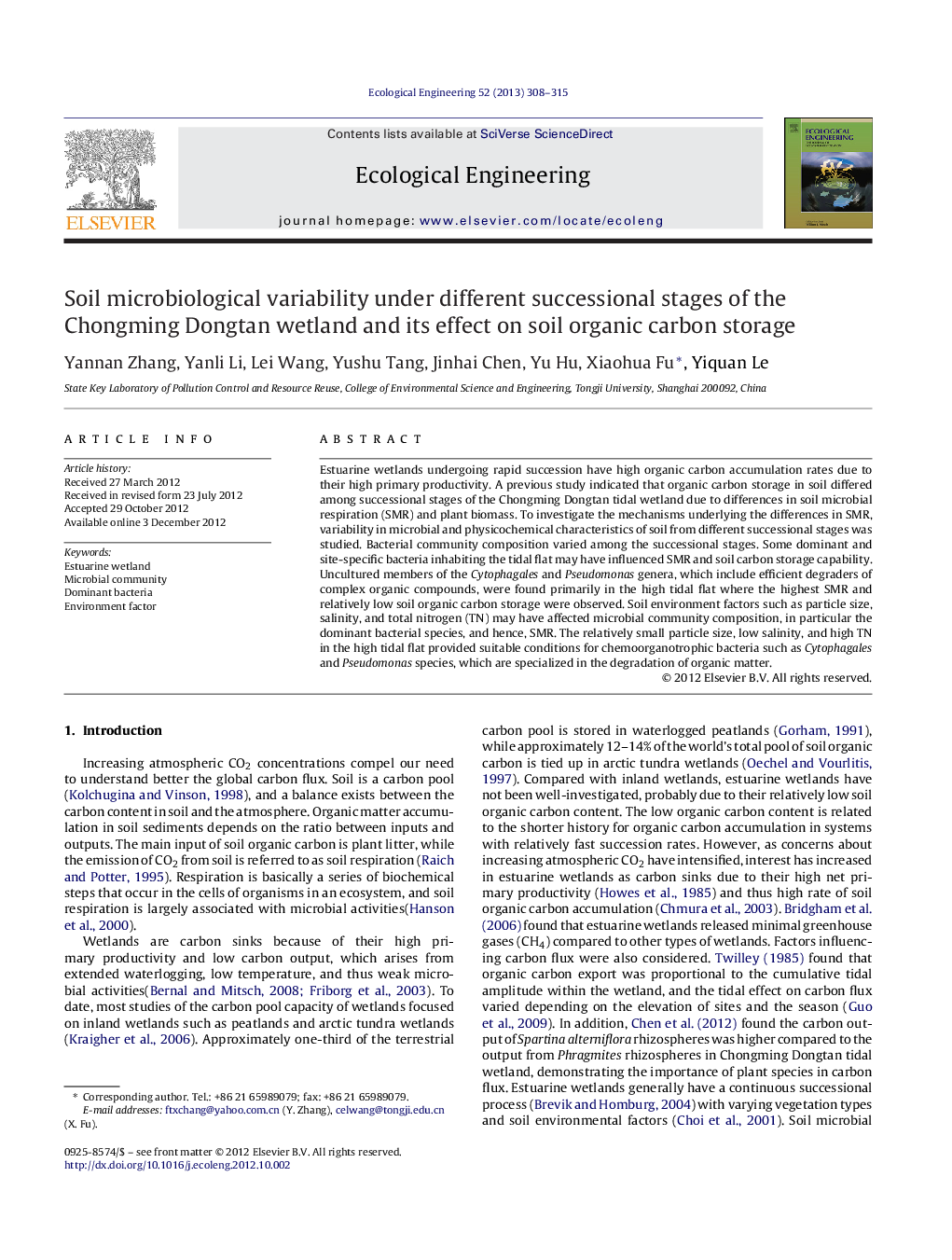| Article ID | Journal | Published Year | Pages | File Type |
|---|---|---|---|---|
| 4389767 | Ecological Engineering | 2013 | 8 Pages |
Estuarine wetlands undergoing rapid succession have high organic carbon accumulation rates due to their high primary productivity. A previous study indicated that organic carbon storage in soil differed among successional stages of the Chongming Dongtan tidal wetland due to differences in soil microbial respiration (SMR) and plant biomass. To investigate the mechanisms underlying the differences in SMR, variability in microbial and physicochemical characteristics of soil from different successional stages was studied. Bacterial community composition varied among the successional stages. Some dominant and site-specific bacteria inhabiting the tidal flat may have influenced SMR and soil carbon storage capability. Uncultured members of the Cytophagales and Pseudomonas genera, which include efficient degraders of complex organic compounds, were found primarily in the high tidal flat where the highest SMR and relatively low soil organic carbon storage were observed. Soil environment factors such as particle size, salinity, and total nitrogen (TN) may have affected microbial community composition, in particular the dominant bacterial species, and hence, SMR. The relatively small particle size, low salinity, and high TN in the high tidal flat provided suitable conditions for chemoorganotrophic bacteria such as Cytophagales and Pseudomonas species, which are specialized in the degradation of organic matter.
► Soil bacterial composition differed in different succession stages of the wetland. ► Some chemoorganotrophic bacteria inhabited in high tidal flat lead the highest SMR. ► Soil environmental condition in high tidal flat availed heterotrophic bacteria live.
